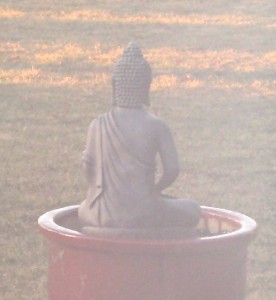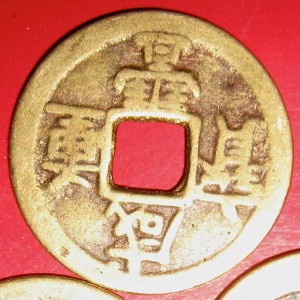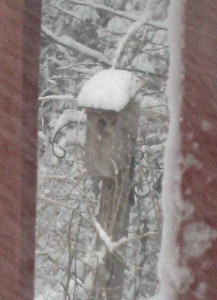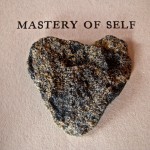
In an intense moment, in an out-of-the-ordinary experience, when I was at the beginning of my recapitulation journey, Jeanne Ketchel told me that this—recapitulation—would be my work now. At the time I took it to mean that all of my time and energy would have to go into my process of reclaiming my energy from my abusive past, until I was done. Later I understood this missive on a deeper level. She was actually telling me that recapitulation would be my work, period, now and in the future. And so it has become. What started as a deeply personal search for truth has evolved into a life’s work—on many levels.
Recapitulation is both what I spend my working life on and also what I spend my personal life on. My view of the world and life in general have been so greatly changed by my deep inner work, especially this process of recapitulation. I am not in the shaman’s world, but I found my way to a practice, a way of doing life that is deeply resonant. The Shamans of Carlos Castaneda’s line released tensegrity into the world, including the recapitulation, with the intent that it find its way to those who are energetically ready for it, ready for a way to change and evolve. It has helped me greatly to broaden my understanding of the world and my life in particular, and so I accept it into my life. In my own way I practice it daily.
When I met Chuck he had already understood that the world of the Shamans of Ancient Mexico offered certain techniques that could be utilized within a therapeutic setting. He saw how the recapitulation breath, the sweeping breath, mimicked the bilateral process of EMDR. He understood the value of recapitulation, not only as a deepening tool, but also as an agent of real change in a deeply transformative process. For the real process of recapitulation asks us to change ourselves so deeply that we shed all self-importance, so that we are more readily available to navigate life without fear, without feeling offended, without feeling special. If we are to experience all that life has to offer, Chuck discovered, we must do more than just manage our traumas and stresses, we must totally heal from them so that we may become receptive, constantly evolving beings.
As I work now to finish my second book in The Recapitulation Diaries series, I encounter my recapitulating self over and over again. I reencounter all I sorted through, all that held me captive, all that I struggled to shed. Insights blossomed the deeper I went into my inner world. As I took on the questions of my own ego or lack there of, I encountered and systematically dissected just what it was that held me captive and defended. The answer more often than not revolved around self-importance: that I was scared, that I was worthless, that I was afraid of everything, that I could not speak and break the pact of silence I’d upheld for almost fifty years. All of these things might not sound self-important, but they were. I discovered that any attachment to self had to be revealed for what it truly was and meant. And then even that had to be discarded. In regaining my energy from my abusive past, by taking it back from my abuser, I freed myself. I healed. That was the beginning.

The Shamans of Ancient Mexico suggest the process of recapitulation for everyone, as a path to freedom. They do not relegate it to healing from trauma, but as a means of healing ourselves of the world we have been raised in, taught to adhere to and trust. They suggest that only in facing the beings we became—through a systematic process of socialization that began the moment we are born—can we dismantle that old world and gain enough energy and perception to live differently in this world, while simultaneously learning what it means to be sober enough to enter other worlds with impeccability.
In order to begin taking this path to freedom, they suggest making a list of all the people we have ever encountered and then doing a new kind of systematic process, a process of recapitulation that involves investigating ourselves in every situation we’ve ever been in, within every relationship. In questioning why, how, and for what reason we got into certain situations—whether by choice or by force—we offer ourselves the opportunity to change. As we do deep inner work we begin to see our lives from a greater perspective. For even as we go deeply into minute details of who we are and why we are the way we are, we begin to gain a far wider view of life in general and ourselves as beings on an evolutionary path. Eventually, we ask ourselves: If I am here in this life facing this situation, what does it mean in the context of my soul’s journey? What am I supposed to learn so that I can evolve? In gaining a bigger perspective we gain meaning for our lives, our eternal life included.
The Shamans of Ancient Mexico suggest doing a recapitulation of our lists and then going back and doing it again and again. Each time we go back we discover more about ourselves and we also shed more of our self-importance. We gain a greater respect for the journey we’ve taken while we also totally let it go.
Once our past has been recapitulated, we also discover that who we have become since then must be recapitulated too. Who was I yesterday? What can I change in my life each day? What can I shed today that will help me to change and grow? Life requires this of us, as each day new memories come asking us to pay attention to the messages they carry to us. In the midst of my second year of recapitulation—even though I often hated doing the recapitulation process as I was constantly being dragged back into horrific memories—I understood that it was, as the Shamans of Ancient Mexico discovered, really a lifelong process. Once begun I knew I would be doing it my whole life, gladly. How could I not when I saw the value of it? I saw myself changing, felt my physical body changing, felt my very cells and my brain changing on a daily basis.
And so now, as I finish my second book, I am once again recapitulating. I breathe the sweeping breath over my old traumas, releasing them again. They no longer bother me as they once did, but still I breathe them out and breathe in new energy. As I breathe out the old self, even the new recapitulated self, I am aware that even that deeply changed self must not be attached to. I must breathe her out and turn toward new life and a new self yet again.
Breathing in all that is yet to come,
Jan







